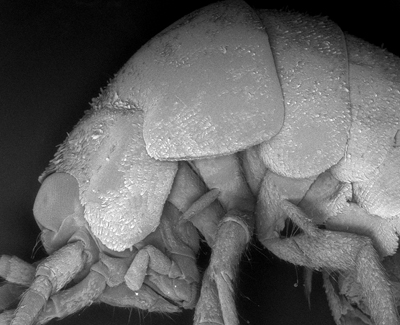| RIKEN Center for Developmental Biology (CDB) 2-2-3 Minatojima minamimachi, Chuo-ku, Kobe 650-0047, Japan |
March 23, 2010 – The evolutionary emergence of the wing is a critical innovation that underlies the success and diverse speciation of insects. Two rival hypotheses have been proposed to explain the emergence of the first insect wings, one suggesting that it arose de novo, the other that it represents a modification of a pre-existing structure. Given the scarcity of early and intermediate examples in the fossil record, the resolution of this question will require a forensic examination of wing-related genes in basal insects and their relatives. New work led by Nao Niwa and colleagues in the Laboratory for Morphogenetic Signaling (Shigeo Hayashi; Group Director) now suggests a possible solution based on genetic evidence that collates the two competing propositions into a single theory of insect wing origins. Working with scientists from Nagoya and Shinshu Universities and the University of Tsukuba, Niwa proposes that the expression of wing-related genes in limb branch primordial regions drifted over time in such a way as to integrate into the dorsal body wall which already showed potential for flat sheet-like outgrowth.
Niwa’s study was born from a comparison of the advantages and limits of two previous models of wing evolution. The first, referred to as the paranotal hypothesis, posits that the wing emerged as a novel extension of the thoracic tergum (the dorsal body wall), while its alternate, the limb branch hypothesis, suggests that wings are actually modifications of dorsal limb branches that were already in place. However, neither of these models could fully explain the morphological features of the insect wing on its own. The Hayashi group used knowledge of the anatomy and developmental genetics of a winged insect to draw comparisons with two key insect species, a wingless basal insect (the bristletail Pedetontus unimaculatus) and a primitive winged insect (the mayfly Ephoron eophilum). These models for comparison have specific morphological traits that have previously been suggested to represent possible relationships to the early wing via adaptations to dorsal limb branches. The bristletail develops a rod-like outgrowth known as a stylus from thoracic and abdominal appendages, while the mayfly nymph shows articulated tracheal gill structures associated with abdomen. However, little is known about the genetic aspects of their specification and growth. The fruit fly Drosophila melanogaster however, is one of the most widely studied organisms in biology, and we have a detailed understanding of its wing growth at the genetic level. The gene wingless (wg) plays key roles inducing the wing disc primordium in the embryo and later promoting growth of the wing pouch. The wing does not form in the absence of wg activity, as indicated by the gene’s name. vestigial (vg) also plays a role in growth control and specification of wing tissue. apterous (ap) specifies the flat shape of the wing by controlling subdivision of the wing into dorsal and ventral compartments. Niwa et al. analyzed gene expression patterns in the primordia of bristletail stylus and mayfly tracheal gill, and found that wg and vg are expressed, results that are consistent with the limb branch hypothesis. However the expression of wg and vg is less regionalized than it is in the Drosophila wing disc, suggesting that positional information required for dorsal-ventral subdivision is missing. Interestingly, wg and vg expression was also detected in the tergum of mayfly and bristletail, accompanied by ap expression. In bristletail, the ap expression domain formed a sharp border, marking the margin of the tergal extension that forms the prominent flat lateral extensions. The expression of wg, vg, and ap in the tergum supports the paranotal hypothesis. Given these new insights into the paranotal and limb branch hypotheses, the authors propose a dual role for wg-vg signaling; an inductive role in the dorsal limb branch and growth-promoting role in the tergal extension where ap specifies the tergal margin in the dorsal body wall. They speculate that the inductive signal may have drifted dorsal ward over evolutionary time toward the outgrowth of tergal extension, and that a synergistic effect may account for the rapid advent of the wing once the two intersected. If this is correct, it would indicate that the two current theories of wing origins are both partially correct, but incomplete, and that the early wing may actually have arisen from a combination of paranotal and limb branch components. ”The evolutionary origin of the insect wing has fascinated many biologists,” says Hayashi. “I am very pleased that we can now propose a model that provides a plausible explanation for previously unanswered questions and serves as a basis for future molecular studies.”
|
||||
|
||||
 |
| Copyright (C) CENTER FOR DEVELOPMENTAL BIOLOGY All rights reserved. |
